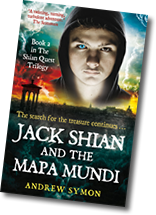Click on the Facebook link if you want to ask any questions...
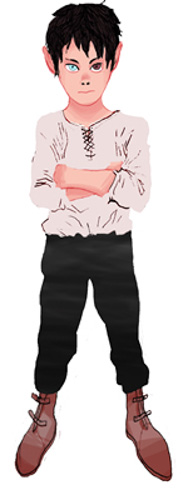 Throughout history people have believed in the Otherworld. Powerful forces tried to wipe out this belief – but without success.
Throughout history people have believed in the Otherworld. Powerful forces tried to wipe out this belief – but without success.
Otherworld people and creatures go by many names: portunes, ‘good men’, the gentry, daoine matha, the fairy folk.
Here they’re called the Shian.
The Characters and creatures page gives details about specific characters in the Jack Shian stories. This page provides a little background on who the Shian are and where they live (this includes Edinburgh castle).
It also gives details about the difference between Seelie and UnSeelie, where the King’s Chalice came from, Shian festivals, and answers questions like ‘Have I seen a Shian?’ and ‘What makes the Shian special?’
Who are the Shian?
Shian can look like any creature you’ve ever imagined; and many that you haven’t.

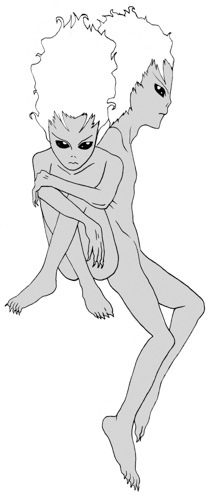
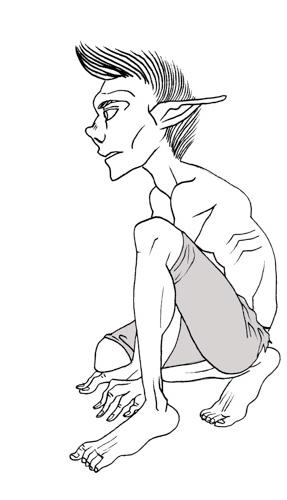
Most humans have forgotten about the Shian, even the ones that look like humans; but they’ve always been there.
The Shian are from the ‘otherworld’, but while some look very like humans, others definitely don’t. Those most commonly linked to the ‘otherworld’ are elves, pisgies (pixies) and various kinds of sprite. However, there’s a whole host of others too [see Characters and creatures].
Very often there’s a difference of opinion about what the creatures look like – they can vary from one location to another, and sometimes the same creature will go by several names, depending on where you are.
Shian and human worlds aren’t so far apart, even today – they’re linked by the mysterious creator force Gosol. Years ago the humans knew all this. No wonder, then, that they told tales about how the Shian and the humans helped each other and fought with each other. They even carved Shian creatures into the walls of their castles.
You see some Shian - the Seelie - help humans. The Unseelie don’t – in fact they go out of their way to harm them. [See ‘Have I seen a Shian?’ below]
Of course not everyone stopped believing in the fairyfolk – but if it’s fairies you’re looking for, you won’t find them in the Shian Quest stories. What you will find is Otherworld people and creatures. For example, grigs - they’re like pisgies [or pixies]- make several appearances. No fairies, though.

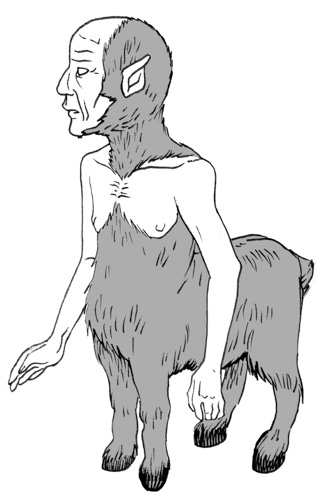 In addition to Shian people – and they look pretty much like humans – there’s all sorts of other kinds of Shian creatures. The Phooka [also known as pooka] show up at the festival along with Icelandic elves. There’s darrigs and korrigans, dwarves and enchantresses, Dunters (’Red Caps’), demons and witchie-hags.
In addition to Shian people – and they look pretty much like humans – there’s all sorts of other kinds of Shian creatures. The Phooka [also known as pooka] show up at the festival along with Icelandic elves. There’s darrigs and korrigans, dwarves and enchantresses, Dunters (’Red Caps’), demons and witchie-hags.
Tree spirits and ghillie-doos (and even a kelpie) are there to help point the way for Jack and his cousins as they go on their quest.
Where do the Shian live?
Everywhere, pretty much. They have their own places, of course, where humans can’t go, like the Shian glens; but some live in the humans’ cities, towns, farms; even Edinburgh castle. Well, not exactly in the castle; more like under it, in the Shian square.
So, pretty much everywhere. They don’t even keep it a secret some of the time…
… not that most humans notice. Ever wondered why Glenshee’s called that? Or Schiehallion? Shee… There’s loads of hills pronounced ‘Shee-an’ (called ‘Sìthean’ or ‘Sìdhean’) around Scotland and Ireland - especially the Scottish Highlands.
Jack Shian has just moved to the square that lies under the rock of Edinburgh castle. Long-deserted, the square has reopened because the Shian peoples are being re-energised by the return of the Stone of Destiny to Scotland. Absorbing energy from the local sandstone, it gives this out to the Shian. It’s a powerful source of energy. And people fight over such power.
Edinburgh castle
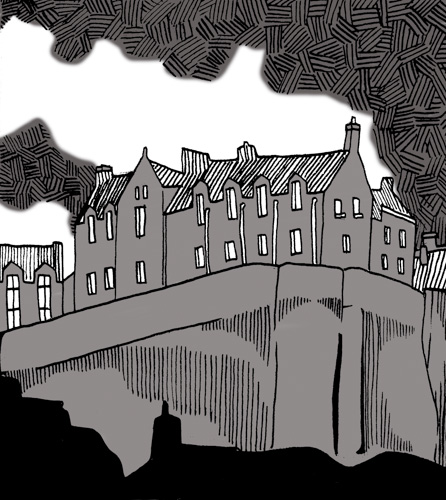 There’s more to the castle than meets the eye: it has secrets. Located somewhere under that castle rock is the Shian square - one of the places where the Shian live.
There’s more to the castle than meets the eye: it has secrets. Located somewhere under that castle rock is the Shian square - one of the places where the Shian live.
‘Under the rock’ doesn’t mean below it – it means inside it. The Shian are much smaller than humans when they’re inside their own spaces. The Shian square would just be a cave if it wasn’t for the rock wall crystals that transmit the light from the outside, and the warren pipes that let in fresh air. Once you’re in there, it’s like any small town square.
The Stone of Destiny
Up in the top part of the castle, of course, is the Stone of Destiny, said to be one of three Shian treasures. One of the others – the King’s Chalice – is what Jack and his cousins must find before the Brashat get to it. If they don’t, huge power will be shifted to the Unseelie.
That means trouble – and not just for the Shian. The Brashat are Unseelie; and they hate humans.
Also known as the Destiny Stone, or Lia Fail in the Gaelic, this is the coronation stone of the ancient kings of Scotland. Plundered by Edward I of England and taken to London, finally returned to Scotland in 1996, and lodged in Edinburgh castle with the honours of Scotland.
But what is it really?
The Shian chuckle at this sometimes: for the hundreds of thousands of tourists who file past it in the Crown Room of Edinburgh castle each year probably just see it as a sandstone block, albeit one of great historical interest.
You see, the Shian know it’s much more than that. It’s been the source of a large part of their energy for… well, longer than anyone can ever know. Their charms and hexes work so much better when it’s nearby. Little wonder the Shian celebrated its return after hundreds of years.
The King’s Chalice
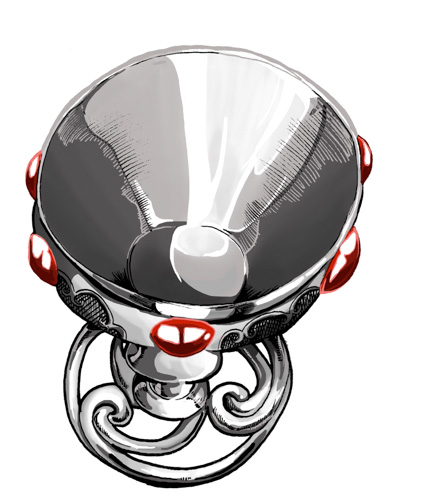 This ornate goblet, reputed to give power over life and death, is characterised by strange markings around its base…
This ornate goblet, reputed to give power over life and death, is characterised by strange markings around its base…
Made by Celtic monks, plundered by Norse warriors, it’s one of the great Shian treasures. It’s vital that the Shian Congress gets to it before the Unseelie do. The Brashat aren’t the only UnSeelie around: there are Hobshee, Dunters, witchie-hags, Boaban-Shee, and even the great demon Amadan.
Have I seen a Shian?
Who knows? It depends how observant you are. When they’re out in the human spaces they can be anywhere. While there’s all kinds of Shian creatures, the Shian people are almost identical to humans. To blend in when they pass from Shian to human spaces, they enlarge to human size. This happens when they pass through the Shian gates.
For some, there’s a harmless enough belief that ‘the little people’ live at the bottom of the garden.
But this gets things wrong.
Put simply, it’s a con trick. Quite a clever one, as con tricks go; but still a con trick.
The Shian (and they go by many names: portunes, ‘good men’, the gentry, daoine matha, the fairy folk, the fey) are rarely as small or inconsequential as these notions of garden sprites, The con trick was necessary because modern life had conspired to drive the otherworld ‘Shian’ people to the verge of extinction. A clever ruse to teach the humans that otherworld people all looked like lacewing sprites drew the danger away.
Nobody hunts tinkerbells.
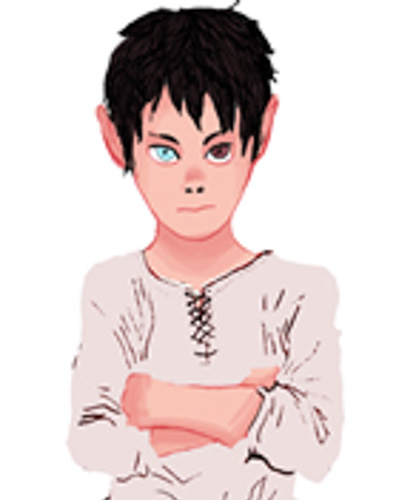
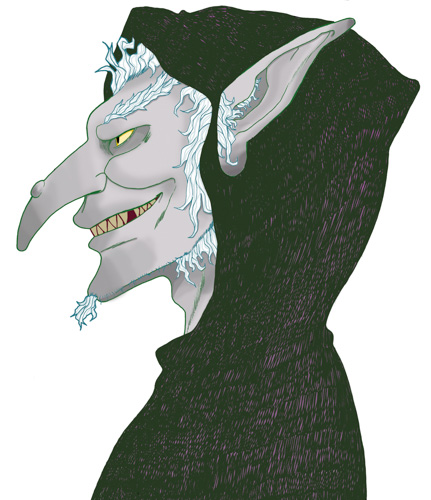
But as Marian McNeil points out in her superb The Silver Bough, "The fairies of Celtic tradition bear no resemblance to the gossamer-winged flower-sprites of the modern child's picture books."
One way you might notice a Shian person – like Jack - is the short eyebrows; maybe slightly pointy ears; and the piercing eyes. It’s a look that makes some humans feel uncomfortable. That said, most are pretty good at blending in.
Other Shian creatures aren’t so good at blending in, but at the same time you’re very unlikely to see them as they stick to the Shian spaces most of the time. Be grateful for that: although some of them are pretty spectacular, you really want to avoid the dangerous ones.
The Flame Spirits are harmless enough, as long as you’re careful about the fire. The Phooka come from Ireland, and are great story tellers. There’s Hoodwinks, Icelandic elves, darrigs, selkies, Red Caps (Dunters), kelpies, the Kirin from Japan, the Oakshee and their tree spirits and many others.
And then there’s the Hobshee. Descended from the hobgoblins of ancient history, they’re bad. Definitely.
See the Characters and creatures section for more on some of these.
What makes the Shian special?
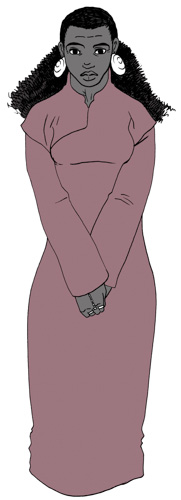 Now that the Stone of Destiny has returned, and the power from it is starting to flow again, most Shian have a special gift of some kind. They call this ‘magycks’. The Shian are really into magycks.
Now that the Stone of Destiny has returned, and the power from it is starting to flow again, most Shian have a special gift of some kind. They call this ‘magycks’. The Shian are really into magycks.
Charms are part of what you learn as a Shian apprentice. They help things along – like when Gilmore the tailor charms the cloth to create Stop-the-bleeding bandages. Jack and the others use charms to pass through the Shian gates into the human spaces. Hexes can be used almost as a curse – but they have a habit of back-firing. That's not to say they're not used, though...
Some Shian are good at healing, or at making certain things, and others can fly. It depends on what needs to be done.
Travel’s easier than it used to be: while it takes some getting used to (travel sickness is quite common), the low road is a network of rapid transport that allows Shian to get all around the country.
For longer journeys there are flying horses, and still other charmed options that Jack and the others must discover.
Set initially in Edinburgh, the youngsters travel to France and to the highlands of Scotland. Norse warriors and Celtic monks – or at least their ghosts – are big players in the forest battle there. And who would have thought that an old ruined hermit’s cell would be so significant for the Shian?
In the second and third stories Jack travels even further, meeting people and creatures from far and distant lands.
Seelie & UnSeelie
The Seelie are essentially well-disposed towards humans. Under the leadership of the Shian Congress (also known as the Seelie Court), since ancient times these Shian people and creatures have helped humans.
A lot of their work is unseen: because Shian people can pass as humans, you might not realise they’re Shian; and the other creatures – such as elves and darrigs – tend to do their good work behind the scenes.
The UnSeelie are a different matter. They’re only interested in what’s good for them – and they will go out of their way to harm humans.

 The UnSeelie people like the Brashat are bad enough; but there’s all sorts of other UnSeelie creatures. The Hobshee are the Brashat’s hired thugs; and there’s Dunters (Red Caps), witchie-hags, and demons. Oh, and Boaban-Shee. They’re a bit like vampires, only they don’t bite, they scratch. See Characters and creatures for more.
The UnSeelie people like the Brashat are bad enough; but there’s all sorts of other UnSeelie creatures. The Hobshee are the Brashat’s hired thugs; and there’s Dunters (Red Caps), witchie-hags, and demons. Oh, and Boaban-Shee. They’re a bit like vampires, only they don’t bite, they scratch. See Characters and creatures for more.
Shian football
It’s not like the football you’re thinking of. Certain hexes are allowed, the game is played over the whole town, and is decided by the first goal. The 538th game between Cos-Howe from Edinburgh and the French team Claville is about to be played…
Shian festivals
The Shian still mark the year with their festivals – Oestre, Midsummer, Hallows’ Eve. A lot of humans have got out of the habit, living in towns and cities where the turning of the earth has less meaning. It’s almost like they’ve forgotten how they came to be here. The Shian haven’t forgotten.
In Jack Shian and the King’s Chalice, the Midsummer and Hallows’ Eve festivals are key parts of the story, while the Oestre festival heralds the first crisis in the second story in the trilogy (Jack Shian and the Mapa Mundi). The winter solstice and Hogmanay mark the climax of the third story (Jack Shian and the Destiny Stone).
Background reading
The Jack Shian stories flow from an ancient tradition in story-telling.
Some books, such as 'Scottish Fairy and Folk Tales', 'Not of this world', 'The broonie, selkie and fairies', and 'Out of the mouth of the morning', tell the old (and some new) tales of the otherworld. There are many more in the otherworld tradition, and some of the overlaps between different European traditions become obvious. These are notable between Scotland and Ireland, as well as the other Celtic countries. I've lost count of the number of books I've seen with titles like 'Celtic myths' or 'Celtic legends'.
To delve deeper into the origins and characteristics of the various otherworld creatures, I consulted many books, but three excellent reference books in particular. These tell old tales, but they also explain them, giving background information which proved essential in forming the context for the Shian Quest stories.
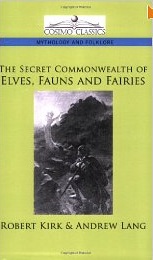
The Secret Commonwealth was written in 1691 by Robert Kirk. The language in the original text is of his day, but there are modern versions available. It gives a fascinating overview of the different types of creature said to exist in Scotland at that time. Given when this was, Kirk's explanations are all the more extraordinary because he was himself a churchman.
Scottish Fairy Belief by Lizanne Henderson and Tom Cowan is a clearly written and well referenced scholarly work. It provides a thorough understanding of how otherworld beliefs evolved in Scotland, often despite the attacks of the church.
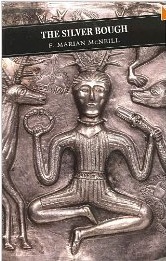
The Silver Bough by F Marian McNeill is also a superb reference book. It explains how much of Scottish literature was influenced by earlier celtic beliefs, and how the druids, magic, fairies and witches did not disappear with growing 'enlightenment'.
Links
Many websites (from the comic to the horrific) are devoted to examining this tradition around the world. The Shian Quest is firmly located in the Celtic tradition, with occasional nods to Norse mythology. Although the following websites are not restricted to the Celtic otherworld, I found them useful.
If you've seen the Jack Shian book you'll notice that the Triple-S spiral features. It has all sorts of symbolism, and you can find out more here:
http://www.netplaces.com/celtic-wisdom/celtic-art-and-symbols/the-sacred-spiral.htm
The otherworld people and creatures come from an ancient tradition, and there are many websites devoted to them, including the following:
http://www.trueghosttales.com/elves-fairies/
Felix's Field Guide to Otherworld Creatures
http://www.elizabethkay.co.uk/guide_ae.html




















